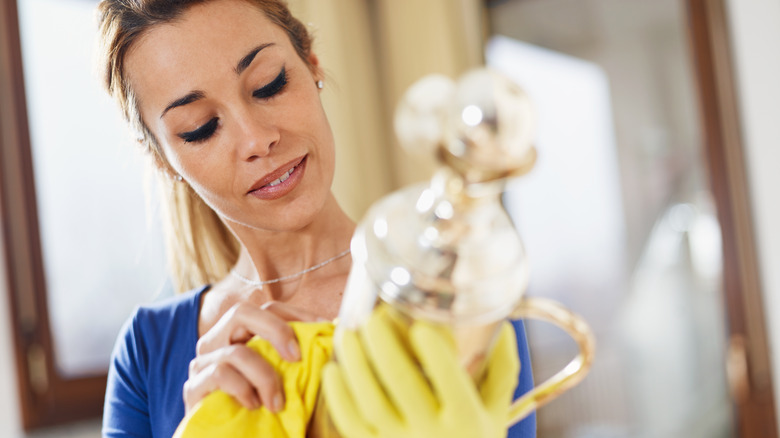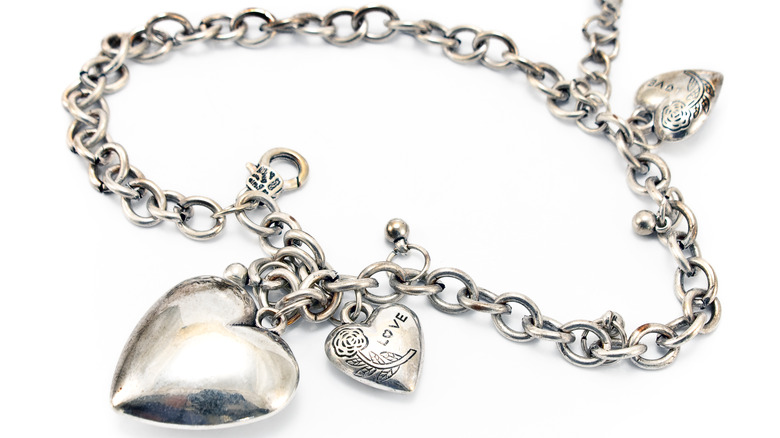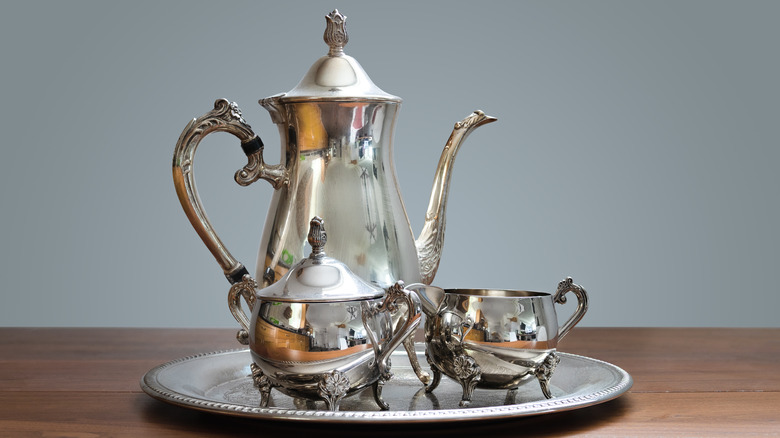The Foolproof Way To Determine Whether Something Is Really Silver
You've probably heard the old saying, "all that glitters is not gold," but all that shimmers isn't necessarily silver either. Unfortunately, many items made to look like silver aren't the real deal. Some are silver-plated, while others are made from mixed metal alloys. Nickel silver and German silver are two stamps that can be found on antiques, for example, but they're alloys rather than actual silver.
However, the most unfortunate items of all are hallmarked as if they should be sterling silver, but they're not. These are usually newer pieces rather than antiques. Some have stampings like .925 or sterling (abbreviated ster.) to make you believe they're authentic, even though they're copper, another metal, or an alloy with silver plating. Vintage jewelry dealers, pawn shops, and other secondhand sellers frequently run into this problem. That's why learning to test silver is so important; there's one best way to do it.
The best way to test for silver
Some sources insist that the magnet test is the best way to check for silver; many even call it foolproof. That's not true, though. In reality, some types of silver-colored items don't adhere to a magnet but still aren't sterling, as mentioned by Silver Recyclers. To truly know if an item is a sterling silver, it must be tested with an acid testing kit. These can be purchased online inexpensively. If you regularly buy what you believe to be sterling silver at thrift stores or flea markets, these kits can be well worth the investment.
When using an acid testing kit, following the safety instructions included in the packaging is crucial. You're dealing with acids, after all. Beyond that, the kit will come with a testing stone. Using an out-of-the-way spot on the object you're testing, you'll rub a small sample of the metal on the stone to make a mark. A drop of silver testing acid is then dropped on the stone to wet the sample. The mark will then change color depending on the fineness of the silver. The test kit has a legend showing what to look for so you'll know if you have sterling silver or another fineness like 800 silver, which is less than sterling.
When to use the magnet test to detect silver
One important thing to keep in mind is that thickly silver-plated items can test as sterling silver using an acid test. After testing a piece that indicates sterling, doing a magnet test can serve as backup confirmation since silver is non-magnetic. Most silver-plated items will stick to a magnet since they have a metal alloy base dipped in silver, but sterling silver will not.
Another thing is that testing with acid kits isn't really feasible while secondhand shopping. It's not a good idea to carry acids around since they're hazardous, and it's also not good to be scratching the metal of something that doesn't belong to you yet. So, as an alternate field test, a magnet test can be better than doing nothing at all. Items made of iron or steel will stick to a magnet. If the price is right and you decide to make a purchase, you can follow up with an acid test when you get back home with your treasure to make sure you have true silver.


